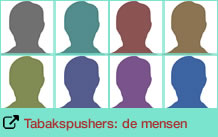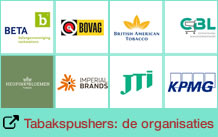BAT organised press trip around ‘Swedish success’
22 September 2025
A report by the Times of Malta reveals how British American Tobacco organised a two-day press trip to Stockholm to convince journalists of the benefits of smokeless nicotine products. They heard that many politicians are still in the ‘stop or die’ approach.
By the web editors
British American Tobacco (BAT) organized a press trip for various media organizations to Sweden last month to launch a new platform with scientific and product information. The underlying goal was to convince journalists of the benefits of alternative nicotine products, including nicotine pouches. With the paid two-day trip, with the Omni platform as a reason, BAT hopes for press attention in European media that can influence public opinion and European policymakers.
In Stockholm, the journalists were informed about the ‘Swedish success’ with tobacco control. The fact that tobacco use in Sweden has fallen to around 5 percent is linked in that story to the fact that snus (oral bags with tobacco powder) is traditionally used in Sweden. Sweden therefore has an exception to the ban on snus that applies in the rest of the European Union. The familiarity with snus also makes the nicotine pouches without tobacco popular in Sweden.
Strong discouragement policy for years
What always goes unmentioned in the narrative of the nicotine lobby is that Sweden has been pursuing a strict discouragement policy for years. At the same time, the use of e-cigarettes has doubled recently and the use of nicotine pouches among 16- to 29-year-olds is increasing considerably. Nicotine use, in all its forms, is therefore hardly less than the European average.
It is to the credit of the journalist of the Times of Malta that he quotes these counterarguments from the Union for International Cancer Control (UICC) in his piece about the press trip. Regarding the Swedish success, the UICC says that the industry is “aggressively promoting this narrative as part of its agenda to market snus and other smokeless nicotine products as a public health tool and capture a new generation of consumers.”
Presentation in science museum
The piece by the Maltese journalist James Cummings shows that at least one colleague from Greece had also travelled to Sweden. The launch of the platform, a ‘slick affair’ according to Cummings, took place at the National Science and Technology Museum in Stockholm, “which could be interpreted as a hint at the futuristic, cigarette-free vision of the company.” The meeting consisted of speeches by BAT executives, including the company’s head of science, private sector personalities and policymakers.
Part of the trip was a tour of various stores in Stockholm, where it was shown how much larger the shelf space for snus, nicotine pouches and e-cigarettes was compared to that for traditional cigarettes. The supplied press photo of course only shows shelves with BAT products. Walking through Stockholm, Cummings meanwhile saw “a suspicious lack of smokers on the street”. In two days he saw only two.
Goal of BAT achieved
Although Cummings added some nuance to his piece and also mentions counterarguments, BAT still achieved what it intended. Because in his piece, Cummings also lets BAT’s representative for Europe, Martina Branconi, speak. She called the steps to reduce smoking “a journey; a lot of politicians are still into the ‘quit or die’ approach, [but] it’s easier to understand when you have real-life examples like in Sweden. It’s less easy to understand it when you’re in another country like Malta or Greece where you still do not have those [smokeless] products getting into the market.”
Oral nicotine products “are normal in [Swedish] culture”, she continues. “It’s not normal in Malta or Italy – that’s why we go back to the range of smoking products; not one product fits all.”
Less damage becomes less risk
Branconi is then given the opportunity to note that the Swedish government has moved from a “reduced harm to a reduced risk approach” and that BAT knew “for a fact the short-term risk of a cigarette and a pouch, or vape, are completely different. “Do I know what will happen in 100 years? No, but I know for a fact that if I’ve reduced the risk in the short term, I’ve definitely reduced the risk in the long term.” With the disclaimer that the nicotine alternatives are not perfect either, and that quitting is best. The fact that users of the alternatives do not necessarily run fewer but different health risks remains unmentioned.
Marketing aimed at young people
The hypocrisy goes a step further when BAT claims to support licensing and restrictions for sellers, tougher crackdown on illegal trade, flavour bans and more adult-oriented packaging to curb youth use. In the Netherlands, meanwhile, BAT, co-owner of Primera, a chain of tobacco selling convenience stores, is doing very little to prevent the sale of cigarettes and (illegal) vapes to minors by Primera retailers.
Cummings subtly points out that BAT has come under fire in the past because it claimed that some people were more likely to develop lung cancer as a result of ‘bad genes’ and also because of marketing aimed at young people. BAT was indeed caught several times using influencers on social media.
But hey, such a press trip is a tried and tested marketing tool with which a tobacco manufacturer like BAT can steer its message past advertising bans, even in a derivative piece like this.
However:
- the Swedish success is a construct of the nicotine lobby and has been debunked several times;
- nicotine in itself is harmful to health;
- the risks of e-cigarettes are similar to those of tobacco cigarettes.
tags: free publicity | Sweden | advertising ban | marketing | nicotinelobby | BAT | snus










 Stichting Rookpreventie Jeugd is geregistreerd als Algemeen Nut Beogende Instelling (RSIN: 820635315 | KvK: 34333760).
Stichting Rookpreventie Jeugd is geregistreerd als Algemeen Nut Beogende Instelling (RSIN: 820635315 | KvK: 34333760).